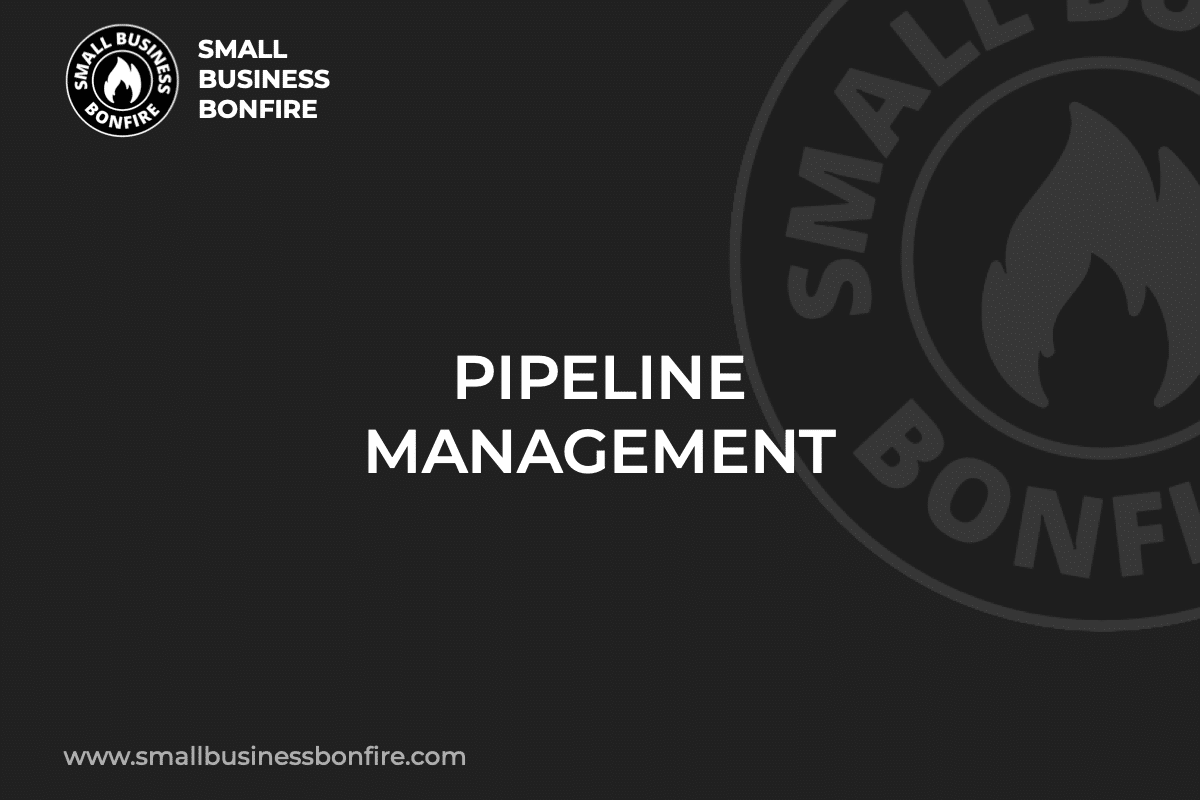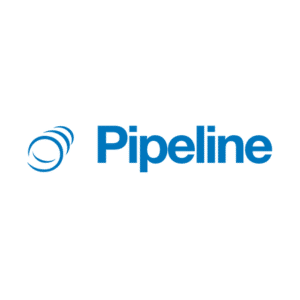Is your business suffering from a disorganized, unpredictable sales process?
Several small business owners miss sales opportunities and use resources inefficiently because their sales pipeline is a mess!
If this sounds like you, don’t worry, I’m here to help.
My name is AJ. I recently sold my business for multiple seven figures. Now, I assist entrepreneurs by offering game-changing advice.
One detail that helped my business grow was efficiency in pipeline management.
What do I mean by this? Keep reading to get the tips you need to transform your business!
Key Takeaways
- Pipeline management is a tool that allows business owners to track and manage deals and prospective customers.
- Effective pipeline management helps forecast sales, identify bottlenecks, and manage resources efficiently.
- Implementing a pipeline management system can boost sales productivity and improve cash flow.
- For effective pipeline management, it's crucial to regularly review and update the sales process.
Related Reading: Best Small Business CRM
SBB Featured Partners
What is a Sales Pipeline?
A sales pipeline is a series of steps a company creates to acquire, nurture, and convert leads.
Typically, sales managers oversee the sales pipeline along with sales and marketing teams.
However, it’s also a good idea for business owners to be in the know about the pipeline as well.
An effective sales pipeline has several advantages, including the following:
- Increases conversion rates
- Improves the overall sales process
- Improves team collaboration
- Analyzes and points out inefficiencies
- Forecasts future sales projections
The way a company organizes the pipeline and incorporates it into its sales processes is called sales pipeline management.
For instance, some of the processes you can incorporate a sales pipeline into include:
- Inventory management
- Branding
- Customer support
- Marketing
Sales pipelines have several detailed steps you must know.
Fortunately, I cover those in the next section!
Sales Pipeline Stages
There are six sales pipeline stages, including:
- Lead generation
- Lead qualification
- Lead interaction
- Value proposition
- Negotiation
- Conversion
Let’s look at each of these stages in closer detail!
Stage 1: Lead Generation
Lead generation is the first step of (most) sales pipelines.
During this stage, companies attempt to gain attention from as many potential customers as possible.
Of course, not all potential customers will convert into paying ones.
Still, it’s essential to get the attention of as many people who fall within your target audience as your sales team can.
Stage 2: Lead Qualification
Lead qualification determines whether a potential customer has a genuine interest in your product or service and the capacity to purchase it.
Further, the lead qualification process helps your sales team prioritize their efforts on high-quality leads most likely to convert.
As a result, this ensures your sales process uses resources efficiently.
Understanding and implementing practical lead qualification is vital to streamlining your sales pipeline and increasing conversion rates!
Stage 3: Lead Interaction
Lead interaction is the stage in sales pipeline management where the sales reps engage with prospective customers.
The goal of this step is primarily to build relationships and persuade leads about the value of your product or service.
Further, this interaction could be through the following forms:
- Phone calls
- Emails
- In-person meetings
- Social media platforms
- Virtual meetings
Also, this stage is crucial as it’s the point where your sales team can directly influence the prospect’s buying decision.
Lastly, lead interaction allows the team to address any concerns or queries the prospect has, which moves them closer to making a purchase!
Stage 4: Value Proposition
In the value proposition stage, businesses explain their product or service’s unique value to the customer, answering the question: “Why should I buy from you?”
Also, this stage is pivotal in sales pipeline management because of the following reasons:
- It strengthens the prospect’s understanding of your product’s benefits
- It differentiates your company from competitors
- It provides compelling reasons for leads to continue in the sales journey.
Lastly, a persuasive value proposition can significantly increase the likelihood of conversion, making it vital to any successful sales process!
Stage 5: Negotiation
Negotiation is the stage in the sales pipeline where sales reps discuss the following things about a proposal:
- Terms
- Conditions
- Potential prices
Negotiating is a critical step that requires careful and strategic communication to reach a mutually beneficial agreement.
Also, this stage is vital because a successful negotiation can seal the deal, resulting in a new customer!
On the other hand, an unsuccessful negotiation can cause a promising lead to walk away.
Stage 6: Conversion
Conversion is the final stage in the sales pipeline, where a potential lead decides to purchase your product or service, effectively becoming a customer.
This decisive stage signifies the success of all prior efforts to guide the lead through the sales process.
Also, converting leads is crucial because a high conversion rate directly translates into increased sales and revenues.
As a result, high conversion rates demonstrate the effectiveness of your company’s sales pipeline management.
Sales Funnel Vs. Sales Pipeline
Small business owners often confuse a sales funnel with a sales pipeline management system.
Think of a sales funnel and a sales pipeline like this:
A sales funnel is like a big party where you invite many people (leads), but you know not everyone will stay till the end (become a customer).
The funnel starts wide at the top, with many potential guests (leads), and narrows down as you move further along the party (sales process), with fewer people deciding to stick around.
The sales funnel represents a way for companies to capture several qualified prospects, which gradually decreases to show who the most qualified leads are.
On the other hand, a sales pipeline is more like a track race.
For example, it’s a view of all the runners (leads) at once, at each stage of the race (the sales process).
You can see who’s at the start line, who’s in the middle, and who’s about to cross the finish line (close a deal).
So, in simple terms, a sales funnel shows the journey your customers take, while a sales pipeline shows your business’s process and sales efforts.
It’s critical to manage your sales pipeline and funnel carefully because they each lead to more sales and data on key metrics!
What is Sales Pipeline Management?
Sales pipeline management is kind of like organizing a game plan for a basketball team.
Like a coach keeps track of who’s on the court, who’s on the bench, and who’s about to make a shot, sales pipeline management involves monitoring all the potential customers at different stages of the buying process.
Whether these leads have just learned about your product, are thinking about buying, or are ready to purchase, each potential customer is at a different point in the “game” (sales process).
Therefore, the better you can manage these stages and move customers along, the more likely you’ll be to win the game (also known as making sales)!
In the following section, I’ll cover why sales pipeline management is a crucial aspect of business!
Why is Pipeline Management Important?
Pipeline management is crucial to small businesses for several reasons.
For instance, when you manage your sales pipeline correctly, it can lead to the following things:
- Better visibility and sales forecasting
- More productive sales teams
- Better customer relationships
- Ability to measure sales effectiveness and find weak points
Enhanced Visibility and Forecasting
Effective pipeline management provides a clear view of a formal sales process and enables you to forecast potential sales accurately.
With this information, you can make essential strategic decisions, such as:
- Resource allocation
- Budget planning
- Setting revenue targets
When companies see their standardized sales process, revenue growth is more likely!
Also, it helps teams meet (and exceed) their sales targets!
Improved Sales Productivity
By understanding where each lead is in the sales pipeline, your sales reps can focus their efforts effectively.
For example, agents can prioritize high-quality leads closer to conversion.
As a result, this enhances productivity and maximizes the return on their time and energy!
Customer Relationship Management
Pipeline management allows you to keep track of all interactions and average deal size associated with potential customers.
Gathering customer and sales data helps maintain strong customer relationships by ensuring timely and appropriate follow-ups.
Why are excellent customer relationships necessary?
When customers feel valued and understood, it leads to more loyal customers and higher-value purchases.
Measuring Success and Identifying Bottlenecks
Lastly, effective pipeline management can help identify bottlenecks in your sales cycle by highlighting stages where sales deals frequently drop off.
Bottleneck information can help sales managers improve their strategies and train agents differently.
Remember, for small businesses, where resources might be scarce, optimizing the sales pipeline can make a significant difference in the bottom line!
Benefits of Pipeline Management
There are four primary benefits of pipeline management.
These advantages include the following:
- Better processes
- Allows companies to utilize multiple pipelines
- Better revenue predictions
- Identifies areas of improvement
Let’s look at each of these benefits closer!
Better Processes
Pipeline management leads to better processes by streamlining and organizing all stages of sales cycles.
By maintaining a clearly defined sales process, businesses can ensure sales representatives don’t accidentally overlook any leads.
Therefore, teams ensure each lead is pursued to its fullest potential!
Because the pipeline management process provides clarity, sales teams can focus their efforts appropriately, reducing wasted time and resources.
Also, it facilitates more effective communication between team members and potential customers, improving overall customer experience.
Further, by highlighting areas of inefficiency, a well-managed pipeline provides valuable insights that can be used to refine and improve sales strategies.
In essence, better processes lead to:
- Increased productivity
- Enhanced customer satisfaction
- Higher sales
Utilize Multiple Pipelines
Another advantage of pipeline management is that companies can utilize multiple pipelines.
Using multiple pipelines is crucial, especially for businesses with various product lines or service offerings or those catering to different types of customers.
Each sales process might require a different approach, and having multiple pipelines allows you to customize the stages and strategies for each of these unique sales processes.
For instance, the pipeline for a high-value enterprise client may include more negotiation and approval stages than for a small business client.
By utilizing multiple pipelines, your sales managers and team can tailor their approach to suit the needs of each specific customer segment or product category.
Also, this enables more accurate and detailed sales forecasts, as you can predict revenues for each pipeline.
Therefore, the versatility of handling multiple pipelines leads to the following:
- Better customer targeting
- Improved sales strategies
- Enhanced revenue forecasting
Predict Revenue
Accurate revenue prediction is another notable advantage of healthy sales pipeline management.
By clearly visualizing sales pipeline metrics, businesses can forecast future sales based on the leads currently at various stages of the buying process.
This data gives you a clear projection of your potential income, allowing you to make informed decisions about the following things:
- Budgeting
- Allocation of resources,
- Strategic planning
Further, these revenue predictions can help identify seasonal trends in sales and guide your marketing efforts accordingly.
Put simply, reliable revenue forecasts result in the following things:
- Better financial planning
- Maximized profits
- Reduced risk of unexpected shortfalls
Identify Areas to Improve
Identifying areas for improvement is a critical advantage of pipeline management.
By providing a comprehensive view of your sales stages, pipeline management highlights areas where your process may fall short or leads are getting lost.
This could include stages in the sales cycle with consistently slow progressions, drop-offs, or specific sales strategies that don’t yield the expected results.
Then, once you’ve identified these areas, you can take any of the following steps:
- Work to refine your sales strategies
- Train your sales team more effectively
- Reconsider your approach to lead qualification and nurturing
Improving aspects of your sales process is continual, and optimization can ultimately lead to the following things:
- Increased conversion rates
- Greater customer satisfaction
- A boost in sales revenue
Pipeline Management Best Practices
Lastly, I’ll explain some important best practices as you implement pipeline management.
Let’s take a look!
Don’t Forget to Follow Up
Follow-ups are integral to pipeline management, ensuring that no potential sales opportunities fall through the cracks.
For instance, regular contact with prospects keeps your brand at the forefront of their minds and demonstrates your commitment to meeting their needs.
This aspect of pipeline management fosters the following things:
- Strong customer relationships
- Promotes customer loyalty
- Drives sales conversions
- Boosts business revenue
Focus on the Best Leads
Focusing on the best leads, often called “qualified leads,” is crucial for optimizing resources and boosting sales velocity.
Qualified leads are prospects who have shown a genuine interest in your product or service and are more likely to convert into paying customers.
By prioritizing these leads, sales teams can do the following:
- Streamline their efforts
- Ensure a higher conversion rate
- Increase sales
Forget Dead Leads
Forgetting dead leads is crucial to pipeline management because it enables sales teams to focus their energy and time on leads that are more likely to convert.
Dead leads are people who have shown no interest or become unresponsive and can drain resources without adding value.
Monitor Sales Metrics
Monitoring sales metrics is vital because it provides critical insight into your sales strategies’ effectiveness and your sales team’s performance.
By tracking these metrics, you can do the following things:
- Identify areas for improvement
- Make informed decisions
- Drive efficiency
Update Your Pipeline Regularly
Regularly updating your sales pipeline is crucial to maintaining its accuracy and ensuring that your sales department has the latest, most relevant information.
This constant refresh allows for more precise forecasting and efficient resource allocation.
Also, consistent updates help quickly identify potential issues or bottlenecks in your sales process.
When your team stays on top of pipeline updates, you ensure the process stays accurate and fueled by the most relevant data.
Keep Your Sales Cycle in Check
Keeping your sales cycle in check is imperative for efficient pipeline management as it helps identify bottlenecks, inefficiencies, and stages where leads may get lost.
By understanding and optimizing your sales cycle, your business can do the following things:
- Accelerate the conversion process
- Improve customer relationships
- Drive more revenue for your business
Create SOPs for Your Sales Pipeline
Creating standard operating procedures (SOPs) for your sales pipeline is crucial in providing a structured, repeatable process for your sales team to follow.
When you create clear, repeatable steps for your sales agents, it ensures consistency in managing leads and closing deals.
Also, SOPs help to clarify roles, streamline workflow, and reduce misunderstandings within the team.
Without clear steps, your sales representatives can get confused easily about what actions to take next.
Avoiding this confusion means more productive workers and better sales outcomes!
Use a CRM
A CRM (customer relationship management) is a software system that helps businesses manage their customer relationships by tracking interactions and data throughout the customer lifecycle.
A CRM system is pivotal in pipeline management.
With CRM software, the system automates and organizes all interactions with potential and existing customers.
CRM tools enhance customer service by ensuring timely follow-ups and providing insightful analytics for informed decision-making, optimizing sales strategies, and driving revenue growth.
Automate Your Sales Pipeline
Automating your sales pipeline is beneficial because it streamlines the sales process and eliminates the risk of human error.
A few examples of human error associated with the pipeline processes include the following:
- Incorrect data entry
- Failure to follow up with a client
- Misinterpreted statistics
Also, automation saves valuable time for your sales team, allowing them to focus on nurturing relationships and closing deals rather than managing administrative tasks.
Further, automation provides real-time visibility into your sales pipeline, enabling accurate forecasting and timely decision-making.
Review Customer Journey’s
Reviewing the customer journey is crucial as it allows businesses to understand and evaluate customers’ experiences and interactions with their brands.
The customer journey considers each step a customer takes with your company, from the initial point of contact through to purchase and beyond.
By understanding the customer journey, businesses can do the following:
- Identify areas of improvement
- Align marketing and sales efforts more effectively
- Cultivate a customer-centric approach
Lastly, considering the customer journey increases customer satisfaction and loyalty.
Leverage AI
Leveraging AI technology in pipeline management can significantly enhance efficiency and accuracy, from automating routine tasks to providing insightful analytics for data-driven decision-making.
AI technology allows sales departments to focus more on strategic tasks and relationship building.
At the same time, the AI handles mundane tasks and delivers insights that enable swift, accurate forecasting and decision-making.
AI is also beneficial because it eliminates the chances of human error.
For instance, having employees do manual data entry can lead to incorrect data because (most) people get bored of typing in numbers.
However, with AI, the machine completes this process swiftly, taking this task off your employees’ hands!
Consistently Audit and Update Your Process
Consistently auditing and updating business processes is integral to maintaining operational efficiency and competitiveness.
These regular checks allow for the timely identification and rectification of inefficiencies or bottlenecks, ensuring that operations remain streamlined and effective.
Further, continuous updates enable businesses to adapt to changing market dynamics, evolving customer needs, and emerging technologies, ensuring sustained growth and success.
Final Thoughts on Sales Pipeline Management
There is everything you need to know about pipeline management!
With pipeline management, you and your team can make more accurate revenue predictions and manage multiple pipelines without confusion.
Also, managing your sales pipeline ensures your company allocates and nurtures leads efficiently.
What additional questions do you have about pipeline management? Let us know in the comments section below!
And good luck implementing an efficient sales pipeline management system!
Newsletter Signup
Join The Leads Field Guide Newsletter for tips, strategies and (free) resources for growing your leads, and closing more deals.




